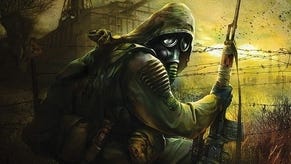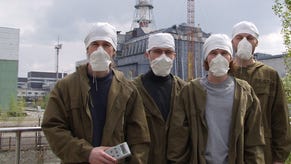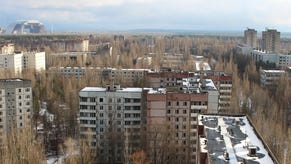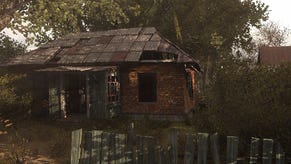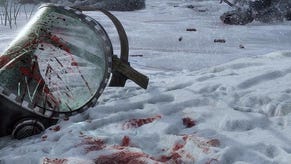S.T.A.L.K.E.R. dev diary #3
See how photos became levels.
In parts one and two of the S.T.A.L.K.E.R. diary, Ukranian developer GSC Game World talked about the history of Chernobyl and the origins of the game's story. In today's instalment, the team describes how it decided to utilise the region as a backdrop, and the steps it took to ensure believability without becoming tedious. You can also check out some comparison images - demonstrating real-life locations next to their in-game equivalents - as well as another EGTV trailer this morning.
We had the idea of a Zone with anomalies, artefacts and stalkers from the very beginning and we were searching for a realistic location to set this in. We wanted to create something as realistic as possible, given that our newly-created X-ray engine allowed near-photo realism.
It didn't take us long to find a perfect setting, having the Chernobyl exclusion zone virtually next door. Moreover, it was a truly 'our' location - so personal and known, our experience of the past. The atmosphere of destruction and abandonment which was pre-existing for the game was more than fitting for the concept. Naturally, to immerse the game world within the Chernobyl zone authentically, we needed to research information on what this area actually contained.
The many trips to the Zone undertaken by us helped us to truly experience atmosphere we wanted to recreate in the game. Looking at the barren streets of Pripyat, the murky sarcophagus of the reactor #4, the red forest, destroyed settlements and the irradiated vehicle cemetery, we envisioned how this all would look at night, when alone and under the hostile gaze of eerie creatures. Add in to that the added the risk of being killed by powerful monsters or a soulless anomaly and we realised that this was exactly the atmosphere we needed.
We wanted the player to live in the Zone and to be able to sense the world around him. We initially thought about creating one big level where there would be no loading points. However, as we were doing everything in maximum detail and quality and the performance capacity of computers today inevitably have a certain limit, such a plan was soon changed to a more feasible one. The world in its entirety got split into 18 huge areas the player was free to traverse as he wills.
To recreate the environment we've known since childhood using realistic textures, we processed an incredible number of photos and video material along with architectural layouts of industrial and residential structures. Of course, we didn't attempt a total match of the in-game areas with the Chernobyl zone locations as we understood that this would make the game very empty in many areas - hardly anyone would enjoy running several kilometres down a monotonously empty field! We instead recreated the familiar, iconic places and images, joining them into levels as required. Some locations are virtually identical to their prototypes: the central lane and the main square in Pripyat and the Chernobyl power plant itself, for example.
To make things seem more realistic and true-to-life we utilised disturbing ambient music playing in the background, the life simulation system and the visible (and audible) consequences of the other living creatures' actions; it is these that make us believe in the reality of the surrounding world. The possibility to approach situations in many different ways, the freedom of movement around the world, communication to other stalkers, stories eavesdropped at campfire - this is what makes the environment in the game. There's no limit to what we feel we can achieve and we feel that we have risen to the task we put to ourselves and created the living, mysterious and dangerous world of the Zone.


